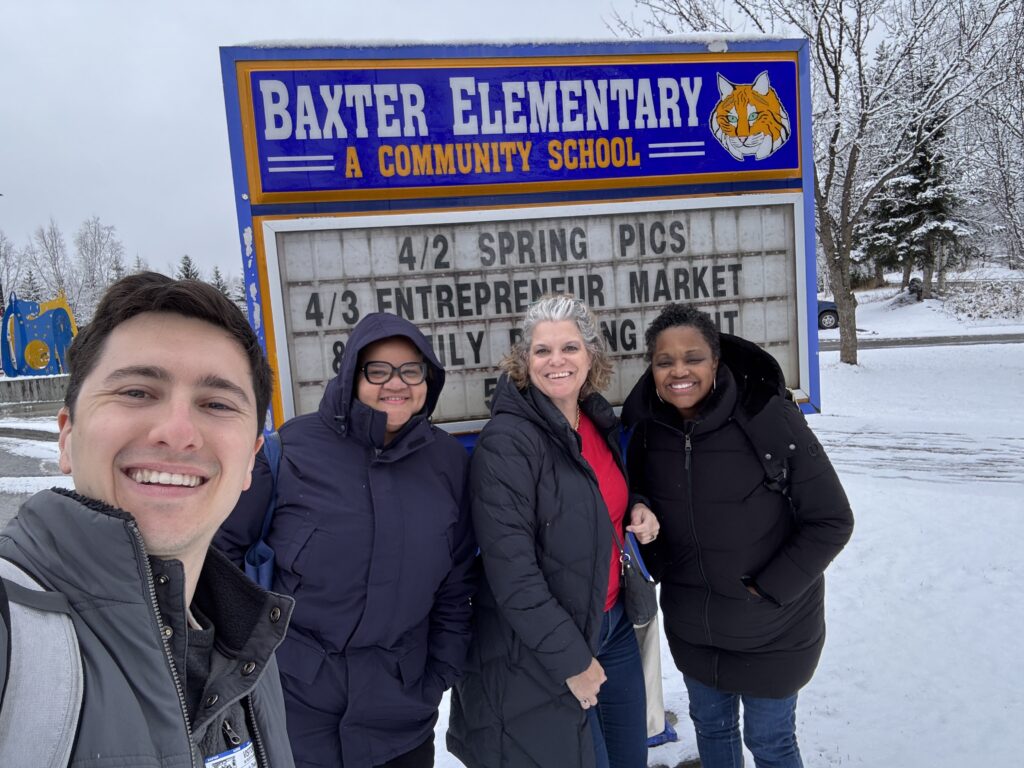Teaching Strategies Employee Spotlight: Ben, Product Manager

 Ben’s passion for education started early—he always knew he wanted to help others learn. That path led him to study neuroscience and education in college and eventually earn a master’s in Learning Design and Technology from Stanford. Along the way, he co-created tools to support student writing and dove deep into research-backed edtech.
Ben’s passion for education started early—he always knew he wanted to help others learn. That path led him to study neuroscience and education in college and eventually earn a master’s in Learning Design and Technology from Stanford. Along the way, he co-created tools to support student writing and dove deep into research-backed edtech.
After returning to New York City, Ben joined Cognitive ToyBox, where he designed engaging, game-based assessments for young learners. When the company became part of the Teaching Strategies family in 2024, Ben was excited to continue his work alongside a team just as committed to building thoughtful, research-driven tools for educators.
Now, as a product manager on the Finch Direct Student Assessment team, Ben collaborates with developers, designers, researchers, and educators to bring innovative assessment experiences to life.
Recently, we asked Ben to share his thoughts on work and life at Teaching Strategies.
What motivates you to work in the edtech field?
During my pre-K family conference, my teacher, Ms. Rosen, told my parents, “Ben discovered early that reading is the key to learning.” I am forever grateful to Ms. Rosen and all my other teachers for fostering my love of reading from an early age. I work in edtech to support all teachers in helping children find that same joy of reading, those same sparks of curiosity and wonder, that my teachers ingrained in me.
Our Finch assessments help teachers see children’s strengths and needs on their path to becoming readers. That’s deeply aligned with my personal mission, and why I feel so fulfilled doing this work every day.
What do you feel sets our product apart from our competitors’?
I recently watched a colleague’s “unboxing” video for our new Kickstart Literacy program, a product I did not contribute to. I was blown away by how beautiful and simple this product looks. It is so evident how every single product decision, from the extra sturdy lamination to the font of the letters, is made thoughtfully and compassionately with teachers and children in mind, all while being built on the strongest foundations of research-based best practices. At Teaching Strategies, we don’t just build products. We build tools and experiences that let teachers focus on what they love most: helping children become the best versions of themselves that they can be.
Tell us about your role at Teaching Strategies. What does your day-to-day look like?
As a product manager on the Finch Direct Student Assessment team, I contribute to a 360-degree view of our product. I love working in product because it means collaborating with so many powerhouse teams across Teaching Strategies to bring our vision to life.
A typical day includes
- brainstorming new game-based assessment content aligned to the GOLD objectives for development and learning with Dr. Nicol Russell (Chief Academic Officer) and Breeyn Mack (Senior Vice President, Education);
- jamming with our game developers to transform that content into a fun, engaging assessment experience for children;
- collaborating with Mark Maloney (Vice President, UI/UX), who turns our jumbled words into beautiful product designs;
- refining roadmaps with the Finch engineers, our behind-the-scenes heroes;
- supporting our Professional Development team as they create teacher and admin training materials;
- acting on product feedback from our Partner Success, Sales, and Subject Matter Expert teams out in the field; and
- traveling with our Research team to test our products in classrooms.
And yes, this can really happen all in one day: I have the Slack messages to prove it!
As technology continues to evolve, how do you think our products will be improved by these changes?
Our products put people first. We bring in innovative technology that stays true to that value. Our new Finch Literacy Screener does just that through automatic speech recognition (ASR), which evaluates children’s spoken responses to score assessments. ASR ensures teachers don’t spend time grading but rather using the data to inform their individualized instruction for each child. It’s technology that’s complex behind the scenes (and makes my brain hurt!) but feels effortless in a teacher’s hands, which is exactly how it should be.
What positive changes have you seen at Teaching Strategies from when you joined, until now?
Did you really think I’d make it through this whole interview without mentioning AI? I’m excited about how we’re starting to use AI internally to collaborate smarter and solve problems faster. And who knows, maybe it’ll even give me a few extra minutes to finish my crossword at lunch.
